Echinocystis - cultivation |
Few people know what the Echinocystis plant is. But almost everyone is familiar with the funny "mad cucumber". These names refer to the same unusual culture.
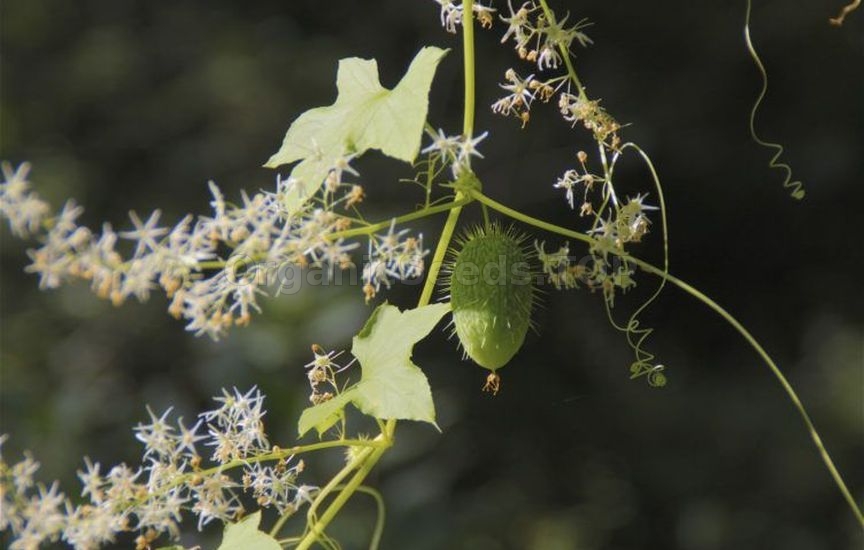 Echinocystis Prickly (Echinocystis lobata or Echinocystis echinata) is an annual herbaceous vine that has earned the title of weed in Europe. Belongs to the gourd family. This is a monoecious plant. It has long stems that grow up to 10 meters per season. They can crawl along the ground or reach up. They cling to any support with a spiral flexible mustache. Outwardly, the culture is similar to a zucchini or cucumber. 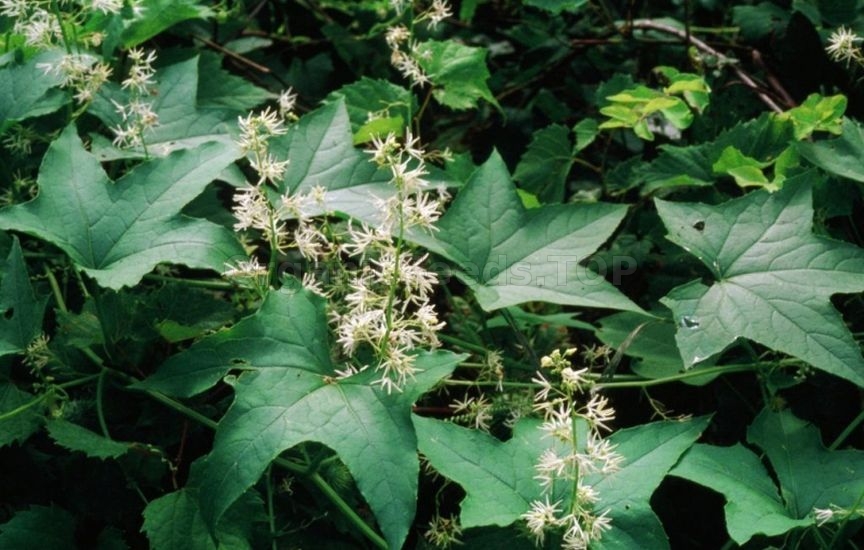 The leaves are rough, three- or five-lobed, with long petioles. Flowers white, small, unisexual. Men's are collected in brushes, women's grow singly. They exude a sweet, honey aroma. The flowering period is in July - early September. The fruits are oval, green in color, covered with small spikes. The average size is 5 cm. In the process of ripening, they explode and scatter seeds within a radius of several meters. The pressure inside the fetus reaches 6 atmospheres. Because of this method of reproduction and numerous spines, Echinocystis is popularly called the blackberry, shooting ivy or mad cucumber. However, the last name actually belongs to a completely different plant. Echinocystis flowers attract bees. This has a positive effect on the yield of cross-pollinated crops cultivated on the site. Useful properties and contraindications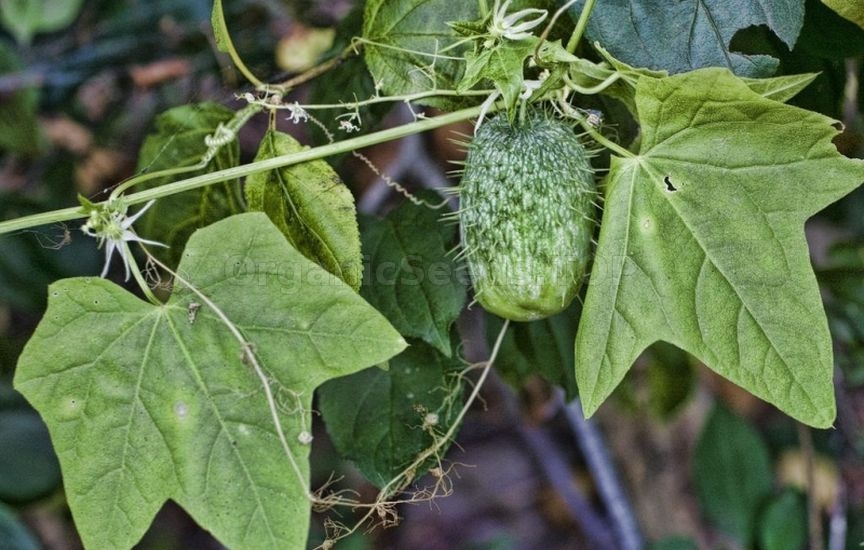 The chemical composition of Echinocystis has not been studied in detail. However, the plant was used by folk healers and healers back in the time of Avicenna. Now its extract is added to some laxatives and diuretics. It is known that the thorn fruit contains many useful substances:
Thanks to them, the plant has a versatile effect on the body:
However, Echinocystis contains toxic substances. Therefore, it must be used with great care. For example, the juice of a plant helps with a cold. But before instillation, it is diluted with water in a ratio of 1 to 1. Otherwise, there is a high risk of burning the mucous membrane. Plant seeds are completely safe. They are harvested, roasted and eaten. They are also added to various dishes instead of pumpkin seeds. To prepare medicinal potions in winter, the harvesting of raw materials is carried out during the flowering period. Leaves and stems are harvested and then dried in a cool but well ventilated area. When, when squeezed, they begin to break, and not bend, they are removed in airtight containers. Raw materials retain medicinal properties throughout the year. The use of echinocystis is harmful if a person has diseases such as:
The use of prickly pear for medicinal purposes is prohibited during pregnancy. Self-treatment with decoctions and infusions begins only after consultation with a specialist. Landing and care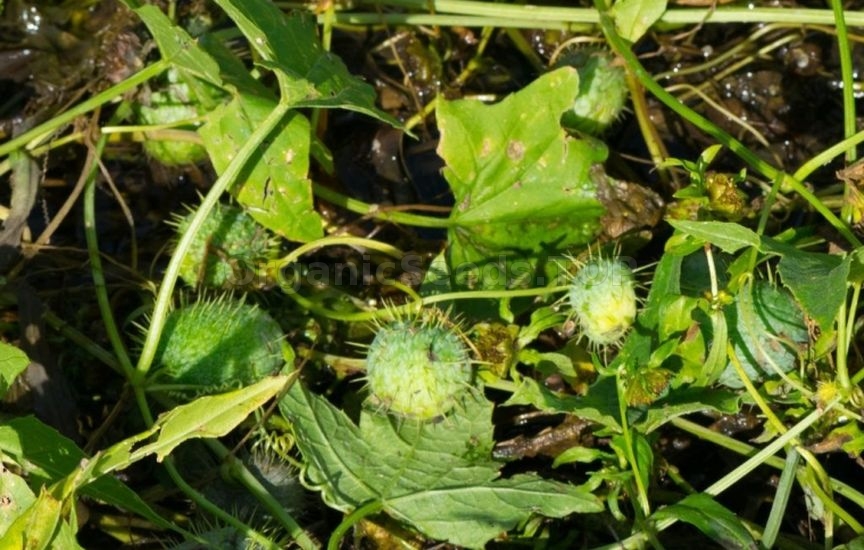 Echinocystis is an extremely hardy plant. It grows well not only in cultivated lands, but also in wastelands. The plant multiplies rapidly and fills new areas. Prickly pear does not require specific care. The main problem faced when growing is uncontrolled spread in the garden. To prevent self-sowing, the seeds are harvested by hand or the fruits are covered with gauze covers. The landing site is located both in the shade and in the sun. However, it is better if it is located on the south side and protected from cold winds. The plant prefers moist loose soils. It develops poorly only on acidic peatlands and swampy areas. It is not afraid of a short-term drought, but cannot live long without moisture. If the soil on the site is acidic, then before planting it is necessary to prepare:
To determine the level of acidity, litmus paper is used. To conduct an analysis, you will need:
After the specified time, the settled water is poured into a separate container and litmus paper is placed in it. If the color stays the same or takes on a bluish tint, then the pH is close to neutral. If the paper turns red, then the soil is acidic. This method does not give an accurate result, like a laboratory study. But with its help it will be possible to find out the general condition of the soil.
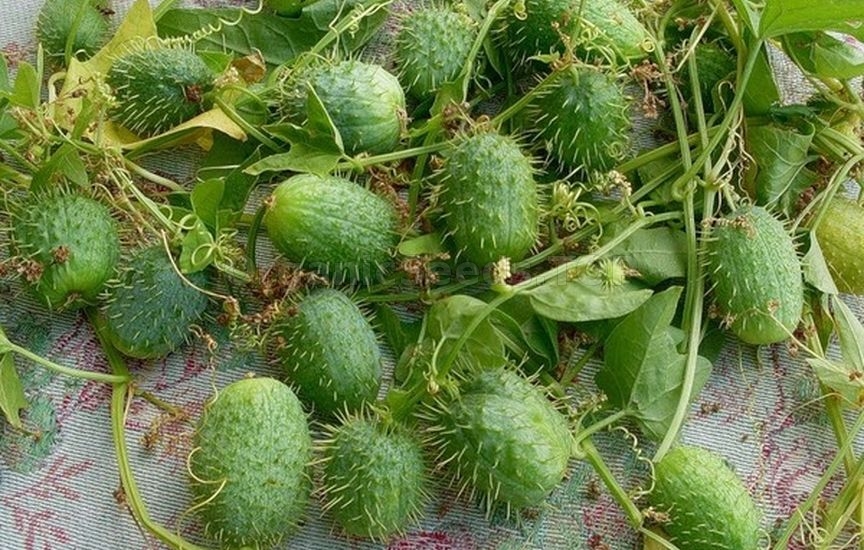 Echinocystis is grown in three ways:
In the first case, the seeds are sown in autumn - in October, immediately after the end of the season. This is the best way, because with long-term storage, germination decreases. The seeds are winter hardy. They survive the cold well in the ground under the snow. Echinocystis gives abundant self-seeding. Therefore, it is required to ensure that it does not occupy the entire site and does not strangle the growing types of crops nearby. For sowing, every 80-100 cm, small holes are dug 3-5 cm deep. 2-3 seeds are placed in each. Some gardeners do it easier - they scatter seeds over the surface of the site, slightly pressing them into the ground, but not burying them. Friendly shoots appear in both cases. In the spring, when 3-4 true leaves are formed on the seedlings, the plantings are thinned out. In order for Echinocystis to grow powerful and beautiful, you should know how to choose a seedling. Only the strongest shoots are left on the beds. Weak and retarded seedlings are removed. In spring, planting seeds occurs in the same way as in autumn. The seedling method is used extremely rarely. Echinocystis grows well with direct sowing in the ground. This method is used if it is necessary for the culture to grow green mass faster. For example, wrapped around a fence or hid a nondescript wall under the leaves. Then seedlings are planted in early spring. Seeds are placed in small pots. Seedlings appear within a few days. The plant is actively developing and stretching upwards. As soon as the soil warms up, the seedlings are moved to the beds. The thorn fruit is not susceptible to return frosts, so you should not worry about the safety of plantings. If desired, Echinocystis is grown on the balcony. All you need is a large pot. The plant will quickly braid the open surface. CareGrowing Echinocystis is very easy. Care features include:
If a drought has set in in the summer, then watering is carried out - 3-5 liters per plant. When precipitation falls in normal mode, the soil does not need to be additionally moistened. Optimal conditions for growth and development are temperature +20…+25 °С and relative air humidity 75–85%. Echinocystis does not like excessive heat. Diseases and pests usually do not affect the culture. The plant is actively developing and stretching upwards, so it will need supports. If there are trees nearby, then Echinocystis will climb them. Because of this, the yield of fruit crops will decrease, so care should be taken. Weeding is carried out at the beginning of the growing season, when the prickly fruit is not yet strong. In adulthood, weeds do not threaten him. 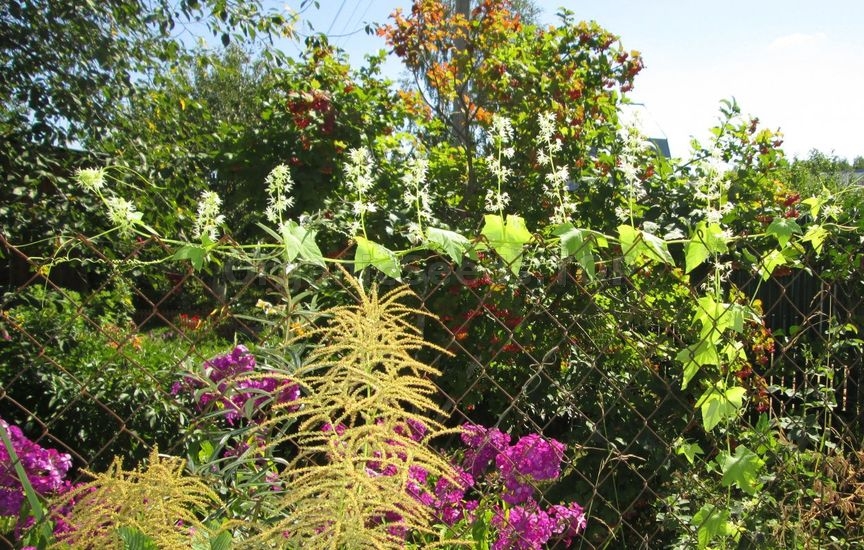 Top dressing is useful if Echinocystis is grown on depleted soil. For an active set of green mass, the culture requires nitrogen. This substance is very mobile. During rain or watering, it goes deep into the ground along with water. Therefore, its stock in the ground is regularly replenished.
In addition, nitrogen performs several functions:
With a lack of this element, the plants become smaller, lag behind in development and acquire a pale color. The best time to fertilize is spring. It is not recommended to do this in autumn, because nitrogen will sink into the deep layers of the soil along with the water that forms when snow melts. Application in ornamental gardening Echinocystis is a liana. Therefore, it is used for vertical gardening. This is a direct "competitor" of hops. Curly bushes are great for decorating:
One plant is able to cover 6–8 m². In the process of cultivation, circumcision is not carried out, but only the whips are directed in the right direction.
Some people get headaches from the scent of Echinocystis flowers. Therefore, before using it in landscape design, it is worth checking the reaction of your own body.  Thornwort grows well where other ornamental crops do not. It allows you to create an original hedge as quickly as possible - in just 1.5–2 months. As a result, the microclimate on the site improves:
If the plant is put on the wall of the house, it will create the effect of a thermos. During the daytime in summer, the room will be cool.
Arches can radically transform the site. They solve different problems:
The peak of decorativeness falls on the period of flowering and the beginning of fruiting. At this time, the plant looks like a garland strewn with prickly "cucumbers", fragrant flowers and ornate mustaches. Growing Echinocystis is not difficult. The plant easily takes root in almost any area, actively develops and blooms profusely. On the contrary, it is important to ensure that it does not occupy the entire area and does not destroy other crops. With the help of the thorn fruit, they decorate the garden in an original way, blocking off the city noise and fuss. You may need:Organic Wild Cucumber Seeds (Echinocystis lobata)Rare plantsExclusive seeds |
|
|
